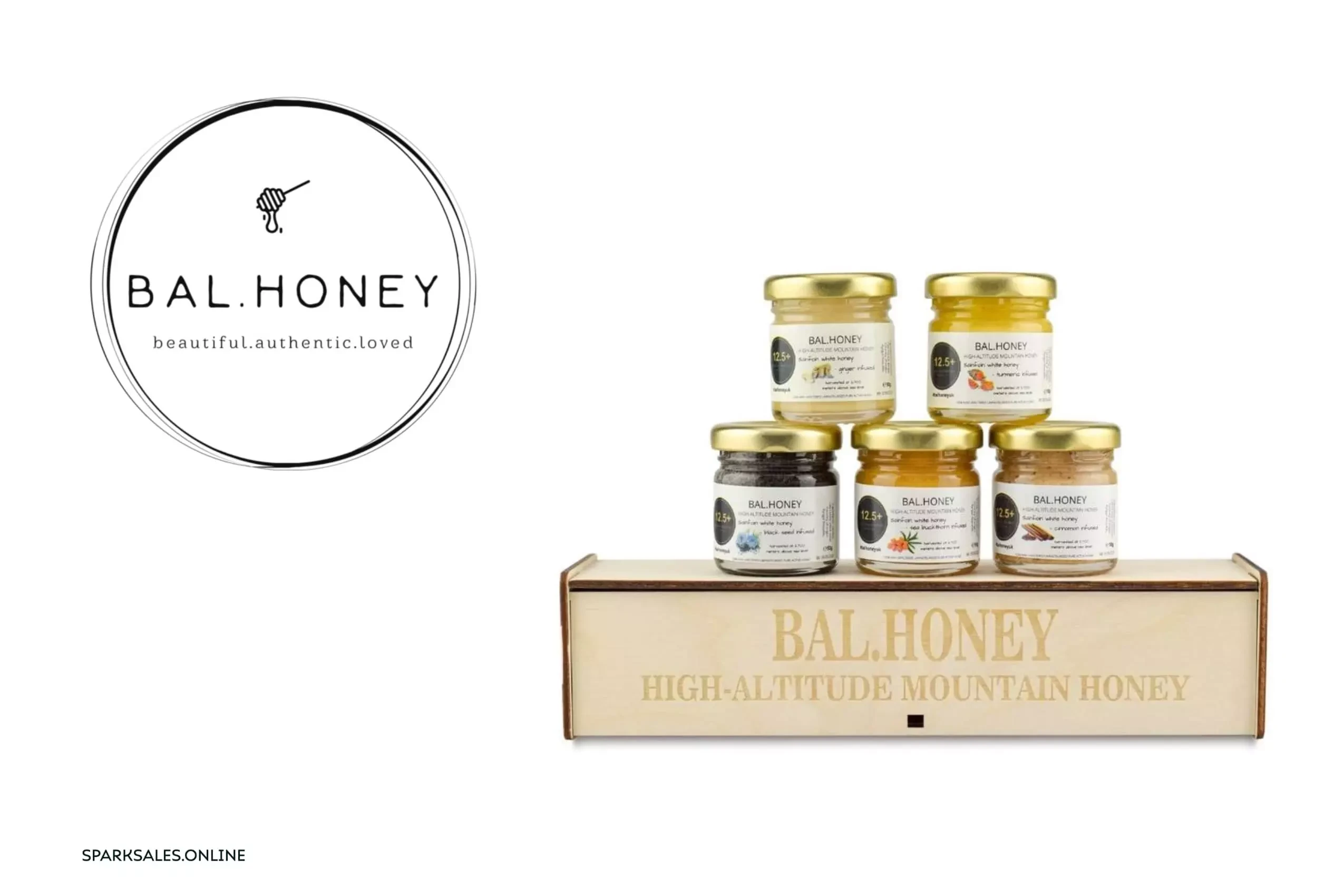Welcome to the ultimate guide to do Amazon niche research, where we’ll equip you with the knowledge and strategies to dominate your market with laser precision. If you’re an aspiring seller looking to find the perfect niche on Amazon, you’ve come to the right place.
Our goal is to help unravel the secrets of Amazon niche research and provide you with practical steps to uncover profitable Amazon niche examples that can skyrocket your sales. From learning How to do a niche research properly to following trends, your online business may be only one click away from a fantastic new boost to profits.
So, let’s dive in and discover how you can conquer the Amazon marketplace!
What is Amazon Niche Research?
Amazon niche research identifies specific product categories or markets on Amazon with high demand and low competition. It involves in-depth market analysis, keyword research, and customer behavior evaluation to uncover profitable niches that align with your business goals.
The problem is that there is no clear-cut method to find your Amazon niche. You need to adapt and blend a bunch of different ideas and processes to uncover the most lucrative examples. By strategically targeting these niches, you can position yourself as a specialist, attract targeted customers, and increase your chances of success on Amazon.
Learning how to find the best Amazon niches will take trial and error, but this guide will help.
How to Do a Niche Research
Let’s break down the steps to conduct effective Amazon niche research. When you are exploring how to find niche products to sell on Amazon, you need to approach this both, like throwing pasta at a wall to see what sticks, and as a data-driven exploration for decision-making.
Step 1: Use Amazon to Find Profitable Niches
Amazon product research itself is a goldmine for niche research. Explore various product categories, delve into subcategories, and closely examine each niche’s Best Sellers Rank (BSR). Look for products that consistently rank well and have many customer reviews. This indicates a potentially profitable niche. Additionally, pay attention to emerging trends and hot-selling items to stay ahead of the competition.
Step 2: Use a Keyword Research Tool to Find Low Competition Niches
Leverage the power of keyword research tools to dive deeper into niche exploration. Tools like Jungle Scout, MerchantWords, or Helium 10 provide valuable insights into search volume, competition levels, and average monthly sales for specific keywords. Look for keywords with moderate to high search volume but low competition to identify niches that offer lucrative opportunities.
Step 3: Look at Amazon Best Sellers
There are people who have already cracked the code on niche markets. Anyone writing about the tips for finding profitable Amazon niches needs to consider which sellers are succeeding. Even if you think you have a rockstar product, look at the competition to ensure enough demand for your target niche.
Which Niche Sells Most on Amazon?
Identifying the niche that sells the most on Amazon requires understanding the dynamic nature of consumer demand and trends. The popularity of niches can fluctuate due to various factors such as seasonal demand, emerging trends, or external events.
To stay current, continuously monitor market trends, conduct thorough market research, and leverage keyword research tools to identify niches that consistently perform well over time.
What people want to purchase online plays a crucial role in Amazon niche research. As everyone from your aunt to the popular girls at the local high schools’ preferences change, so do their purchasing behaviors. It’s essential to monitor all the different popular trends and preferences to identify potential niche opportunities.
Do your best to watch out for specific market reports in your industry or subscribe to news feeds that offer insights you cannot find anywhere else. Also, look closely at social media trends and customer reviews to gain insights into the evolving demands of your target audience.
How Do I Start a Niche?
Starting a niche on Amazon requires a strategic approach and thorough research. Here’s a step-by-step guide to help you kickstart your journey:
Step 1: Begin with Your Passions
Start by exploring your interests, hobbies, and areas of expertise. Choosing a niche that aligns with your passion will not only make your work more enjoyable but also give you an edge in understanding the needs and preferences of your target audience. Consider your knowledge, experience, and skills that can contribute to the success of your niche.
Step 2: Conduct Market Research
Delve deep into the market to identify potential opportunities and validate the demand for your niche. Analyze the competition, customer reviews, and sales data of existing products within your chosen niche. Look for gaps in the market that you can fill with unique offerings or improvements on existing products. By understanding the competitive landscape and consumer behavior, you can refine your niche and differentiate yourself from competitors.
Step 3: Define Your Target Audience
Clearly define your target audience to tailor your niche offerings to their specific needs and preferences. Consider demographics, interests, pain points, and purchasing behaviors. This will help you create compelling product listings, targeted marketing campaigns, and build a strong connection with your customers. Understanding your audience can better position your products and effectively communicate their value.
How to Validate Your Amazon Niche Idea
Validating your Amazon niche idea is crucial to ensure its viability and profitability. Here are the key steps to validate your niche idea effectively:
Step 1: Keyword Research and Search Volume Analysis
Perform comprehensive keyword research to gauge the demand and popularity of relevant keywords related to your niche. Analyze the search volume for these keywords using tools like Jungle Scout, MerchantWords, or Google Keyword Planner. Look for keywords with a decent search volume, indicating a potential market for your niche.
Step 2: Evaluate Competition and Sales Potential
Assess the competition within your niche by analyzing the existing products, their sales performance, and customer reviews. Determine if there is a healthy balance between competition and demand. High competition may indicate a profitable niche, but it can also be challenging to enter.
On the other hand, low competition may suggest untapped opportunities but also raises questions about market demand. Strike a balance and identify a niche with fair competition and potential for sales growth.
Step 3: Conduct Customer Surveys and Feedback Analysis
Engage with your potential target audience through surveys, online forums, or social media groups to gather feedback and insights. Understand their pain points, preferences, and willingness to purchase products within your niche. This direct interaction with your target customers will help validate your niche idea and refine your offerings based on their feedback.
By following these steps to start and validate your Amazon niche idea, you can confidently enter the market, knowing there is demand and potential for success. Remember to continuously monitor the market trends, adapt your strategies, and provide exceptional customer experiences to stay ahead in your niche.
Our Suggestions for the Best Amazon Niche Categories
- Pet Supplies: Capture the hearts of pet owners with a range of high-quality pet supplies, including toys, grooming products, and accessories. Cater to the specific needs of various pets, such as dogs, cats, birds, or reptiles. US buyers spend over $123 billion on pet supplies every year.
- Newborn & Young Babies: Offer a wide array of baby products, including clothing, feeding essentials, nursery decor, and developmental toys. Focus on safety, comfort, and convenience for new parents. This is a high-in-demand market because there are 4.5 births every second in the world.
- Entertainment & Gaming: Tap into the thriving entertainment and gaming market by offering video games, consoles, accessories, board games, or collectibles. Stay updated with the latest releases and target specific gaming communities. Gamers aren’t just teenagers living in mom’s basement. Over 3 billion global players range across all ages and demographics.
- Home Workout Gear: Cater to the growing fitness and wellness trends by providing home workout equipment, yoga mats, resistance bands, or fitness accessories. Offer solutions for individuals seeking convenient ways to stay active at home. Even before Covid, roughly 61% of shoppers had a designated workout space in their home, apartment, or living area.
- Men’s Beard Products: Target the grooming needs of the modern man by offering a range of beard care products such as oils, balms, grooming kits, and accessories. Focus on quality ingredients and appeal to style-conscious individuals. Think this is too niche? About 25% of men 18-29 use bear products, and that only grows the older they get.
- Eco-Friendly/Green Products: Attract environmentally conscious consumers with a range of eco-friendly products, including sustainable home goods, reusable alternatives, organic skincare, and biodegradable items. These are high-value products, as 75% of sustainable goods sell better online than in-store.
- Work at Home: With the rise of remote work, cater to individuals’ needs for home office essentials, productivity tools, ergonomic furniture, and organization solutions. Help them create a productive and comfortable work environment. You’re targeting roughly 22 million work-from-home/remote work users.
- Diet & Health Supplements: Tap into the health and wellness market by offering a variety of dietary supplements, vitamins, and natural health products. Focus on specific nutritional needs or target popular health trends. Regardless of your opinion, you cannot deny a market valued at $152.3 billion globally in 2022.
- Women’s Interests: Provide a range of products that cater to women’s interests, such as fashion accessories, beauty products, self-care items, or lifestyle and home goods. Stay updated with the latest fashion trends and address specific needs. While men and women shop online at about the same rate, women shop more for gender-specific products.
Conclusion
Mastering Amazon niche research is the key to dominating your market with laser precision. Following the steps outlined in this comprehensive guide, you can uncover profitable niches, position yourself strategically, and boost your sales on Amazon.
Remember, thorough research, continuous adaptation, and excellent customer service are essential for long-term success. So go forth, conquer your niche, and ignite your Amazon sales!
If you need help optimizing your various Amazon listings, be sure to contact our team at Spark Sales Online. We can ensure all your products are fully SEO optimized so you get as many shoppers looking at your online store as possible.
FAQs:
How do you research niche products to sell on Amazon?
To research niche products on Amazon, start by exploring various product categories and subcategories on the platform. Consider Best Sellers Rank (BSR) and customer reviews to identify potentially profitable niches.
How do I find the best Amazon niches?
Finding the best Amazon niches requires a combination of thorough research and analysis. Begin by identifying your passions and areas of expertise to narrow down potential niches. Conduct extensive market research to assess those niches’ competition levels, customer reviews, and sales data. Look for gaps in the market or underserved customer needs that you can fulfill with unique product offerings.
What tools can I use for Amazon niche research?
There are several tools available to assist you in Amazon niche research. Some popular ones include Jungle Scout, MerchantWords, Helium 10, and Google Keyword Planner. These tools provide valuable insights into market trends, search volume, competition levels, and sales data for specific keywords and product categories.
How can I find low-competition niches on Amazon?
To find low-competition niches on Amazon, focusing on specific keywords and subcategories with decent search volume but relatively fewer sellers is essential. Utilize keyword research tools to identify keywords with moderate search volume and low competition scores.
How do trends influence Amazon niche research?
Trends are significant in Amazon niche research as they impact consumer demand and purchasing behaviors. You can identify emerging niches or adapt your niche to cater to changing consumer preferences by keeping an eye on market trends.








